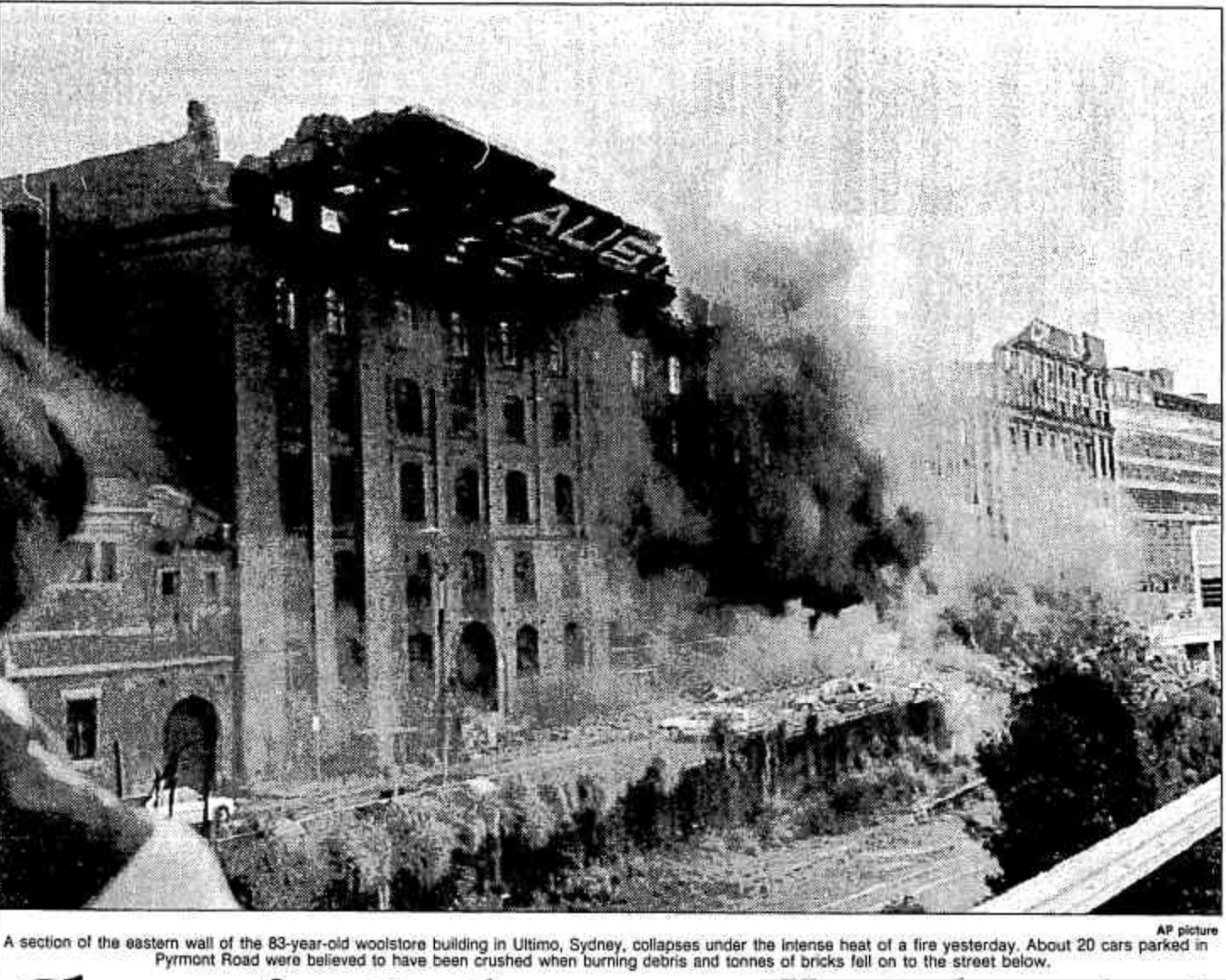Arson
Timber yards, wool stores and the sugar refinery tempted people to commit arson. The attack on St Bede’s school in 1867 is one example. The destruction of Elder’s Hall in Union Street (in 1902) is another. And in 1916 there was an arson epidemic. The Sun (11 September 1916) reported six attempts in the city, two of them targeting Saxon & Binns timber yard in Pyrmont. The police suspected “an organised gang of incendiaries”.
It was The Sun again (4 December 1920) that reported an attack on Dawson's toy factory in Pyrmont Bridge Road. Traces of kerosene in a heap of shavings suggested fire-raising. A witness thought that the place was set on fire to cover up a robbery. The stock had been insured for £2250, but the unlucky toymaker had recently reduced the sum by £500.
One case of arson provoked the government to offer £50 and a free pardon for information about a fire that destroyed six motor cars in a bonded warehouse in Ada Place. (Government Gazette, 7 October 1927)
Fire destroyed a bond store and rope works in 1952, causing damage exceeding £75,000. Even more alarming was the age of the accused: a 21 year old and boys aged 13 and 15. (Sydney Morning Herald, 10 December 1952).
Not long after that, an arsonist set fire to a factory owned by William Ogilvie Hay and Son in Miller Lane. John Petterson, 21, was alleged to have broken in and set the fire. He caused £93,000 of damage – to steal a ballpoint pen and 10 shillings. A psychiatrist attested that Petterson “had been an imbecile from birth,” and the jury found him unfit to plead. (National Advocate, Bathurst, 14 May 1953)
In 1992, when the AML&F wool store burned down, 20 cars in the street were also destroyed. Firemen suspected that squatters were responsible: the abandoned wool store had recently been home for homeless men (Canberra Times, 7 and 8 July 1992). The men themselves suspected developers.


